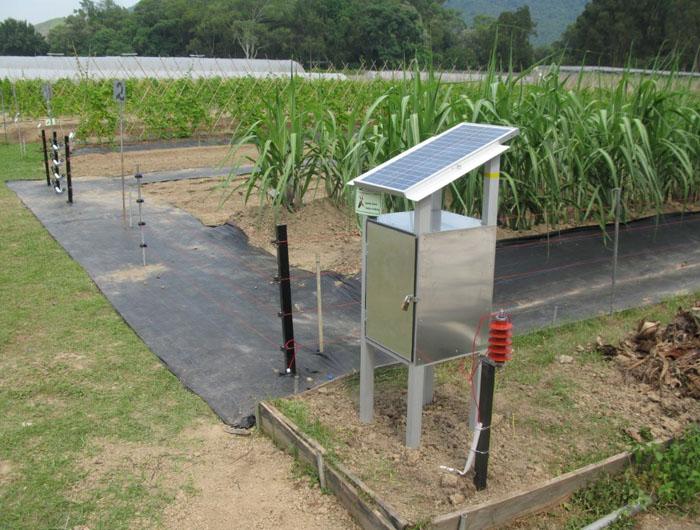Testing your electric fence is important to
ensure it's functioning properly and providing the intended level of security
or containment. Here's how you can test your electric fence:
As its name suggests, using a voltmeter is one
of the most reliable tools for testing an electric fence. You can find one at
home improvement stores. To use the electric fence voltmeter:
1. Start by standing near the part of the fence farthest from the fence
charger. Identify the ground wires of the fence by checking the fence manual.
2. Hold the plastic part of the voltmeter’s probe, and use the metal tip to
touch the ground wire. If there is no ground wire, touch the metal tip of the
probe into the soil near the fence.
3. Keep the metal tip of the probe to the ground wire or the ground. At the
same time, hold the metal prong on the end of the voltmeter to a charged wire.
4. The digital screen on the voltmeter will display the voltage. Compare the
voltage reading to your fence manual, which will tell you what the fence’s
voltage should be (Most electric fences have a voltage of 2,000 to 10,000
volts).
5. Repeat these steps along the fence, moving closer to the charger, to find
weak spots.
The first alternative method you can use to
check your electric fence is to attach an electric fence indicator lights to your fence. You can get them for a fairly
cheap price. Also, you can pay a little bit more for some extra features. For
example, some light indicators may also have voltage indicators. Usually, they don’t
need batteries as they get their energy from the fence itself, and are water
and UV resistant. The way they work is simple: when the fence is on, the light
will remain illuminated. All you have to do is to purchase them and attach them
to your electric fence at regular intervals.
The other way to check if your electric
fence is working might be a little bit old-school: using a compass to check for an electromagnetic field. Take the compass, and when placing about 5 to 8 cm from the wire,
the compass arrow should start to vibrate due to the magnetic field. Don’t rush
and allow some time for the electric pulses to reach your compass. 10-30
seconds should do.An extra way to test the fence is to use your hearing.Be careful with that method as you might not be able to hear electric
fence pulses that the charger sends out every 10 to 30 seconds. Therefore, if
you don’t hear anything, don’t rush to touch the electric fence with your hands
as it doesn’t mean that it is not working.
If the electric fence is on, you will hear a
humming or buzzing sound. If the fence is broken or has a shortage, then the
humming or buzzing, and sometimes even crackling will be quite loud. Once
again, don’t rush to fix it yourself as it’s safer to ask professionals to take
a look at it.
“a man can fail many times, but he isn\'t a failure until he begins to blame somebody else.”
— j. burroughs












